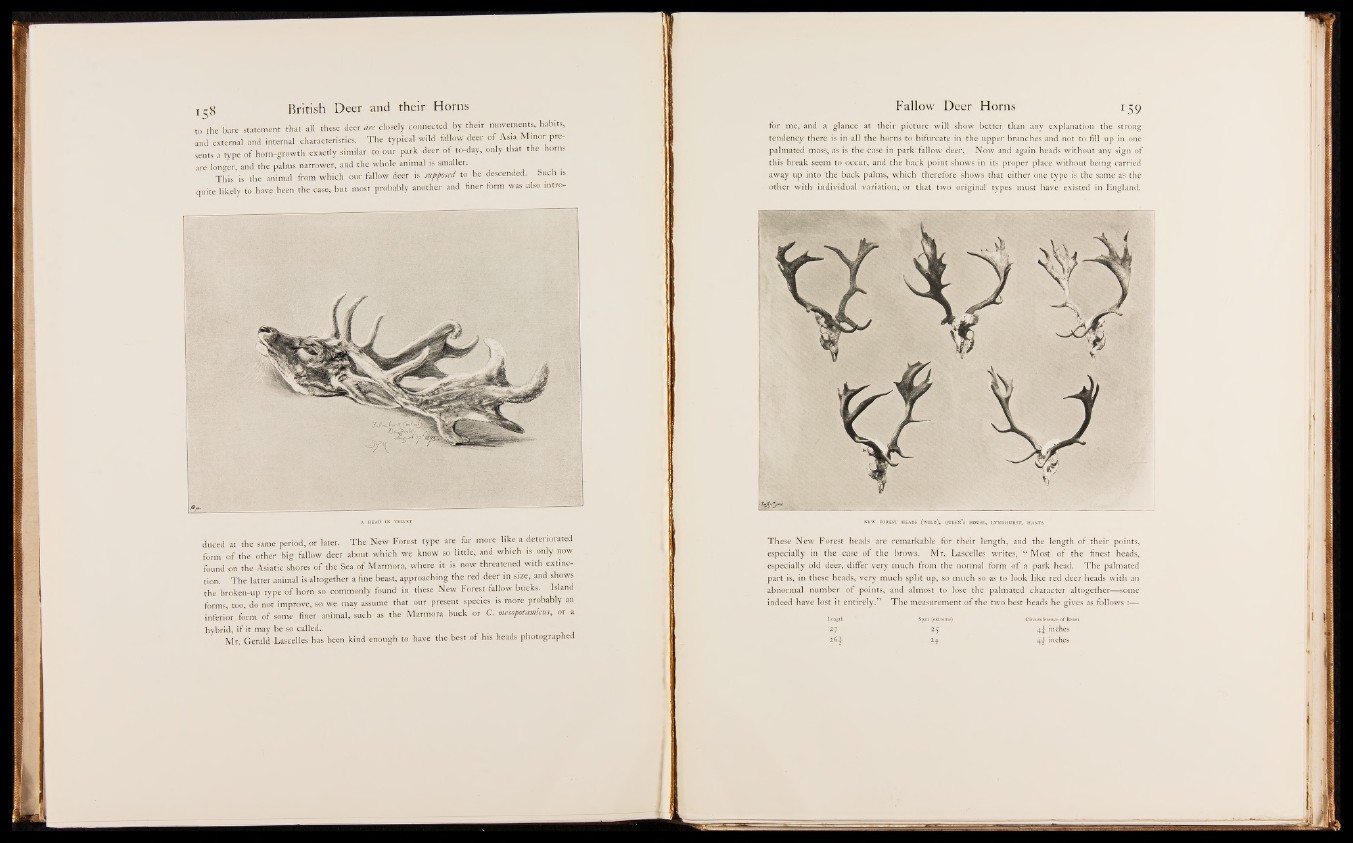
to the'bare statement that all these, deer are closely connected by their movements, habits,
and external and internal characteristics. The typical wild fallow deer of Asia Minor presents
a type o f horn-growth exactly similar t | | u r park deer o f to-day, only that the horns
are longer and the palms narrower, and the whole animal is smaller.
This is the animal from which our fallow deefSs .supposed to be descended. /Such is,
quite likely to have been the case, but most p r o f if ly another and finer form was alsq.mtro-.
duced at the same period, or later. The New Forest type are far more like a deteriorated
form of the other big fallow deer a | # t which we know so little, and which g o n ly .n ow
found on the AsiatSphores of the Sea of Marmora, where it Brow threatened with exa«j|
tion. The latter animal is altogether a fine beast, apprsjrhing the red deer in siuji^nd shows
the broken-up type o f horn so commonly found in these New Forest fallow bucks. Island
forms, too, do not improve,.sojajre may assume that our present species is more probably an
inferior form o f some finer animal, such as the Marmora buck o r j j | mesafotamtcus, or. a
hybrid, i f it may be so called.
Mr. Gerald Lascelles has been kind enough to have the best o f his heads photographed
for me, and a glance at their picture will show better than any explanation the strong
tendency there is in all the horns to bifurcate in the upper branches and not to fill up in one
palmated mass, as is the case in park fallow deer. Now and again heads without any sign of
this break seem to occur, and the back point shows in its proper place without being carried
away up into the back palms, which therefore shows that either one type is the same as the
other with individual variation, or that two original types must have existed in England.
NEW FOREST HEADS (wild), q u e e n ’s HOUSE, LYND HURST, HANTS
These New Forest heads are remarkable for their length, and the length o f their points,
especially in the case o f the brows. Mr. Lascelles writes, “ Most o f the finest heads,
especially old deer, differ very much from the normal form o f a park head. The palmated
part is, in these heads, very much split up, so much so as to look like red deer heads with an
abnormal number o f points, and almost to lose the palmated character altogether— some
indeed have lost it entirely.” T h e measurement o f the two best heads he gives as follow:
Length Span (extreme) Circumference of Beam 27 2 5 inches
2 6 ^ 24 4^- inches